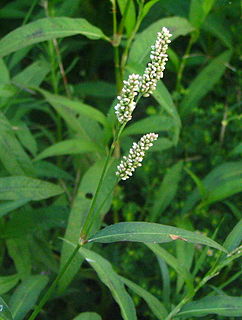
Polygonum is a genus of about 130 species of flowering plant in the buckwheat and knotweed family Polygonaceae. Common names include knotweed and knotgrass. In the Middle English glossary of herbs Alphita, it was known as ars-smerte. There have been various opinions about how broadly the genus should be defined. For example, buckwheat has sometimes been included in the genus as Polygonum fagopyrum. Former genera such as Polygonella have been subsumed into Polygonum; other genera have been split off.
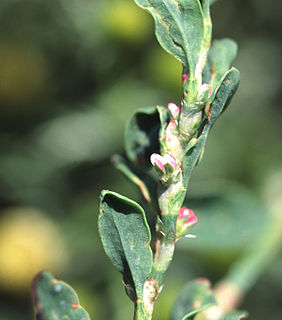
Polygonum arenastrum, commonly known as equal-leaved knotgrass, is a summer annual flowering plant in the knotweed family Polygonaceae. It is native to Europe and can be found on other continents as an introduced species and a common noxious weed. Other common names include common knotweed, prostrate knotweed, mat grass, oval-leaf knotweed, stone grass, wiregrass, and door weed, as well as many others, knotweed was first seen in North America in 1809 and is now seen across much of the United States and Canada.
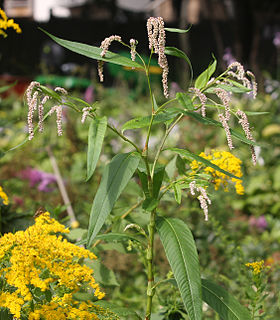
Persicaria lapathifolia, known as pale persicaria, is a plant of the family Polygonaceae. It is closely related to Persicaria maculosa and as such is considered a weed in Britain and Europe. Other common names for the plant include pale smartweed, curlytop knotweed, and willow weed. It is a species complex made up of a great many varying forms, sometimes considered varieties. The environment also has a strong influence on the morphology of an individual plant.
Polygonum ramosissimum is a North American species of herbaceous annual plants in the buckwheat family, widespread across much of Canada and the United States, where it is commonly called bushy knotweed.
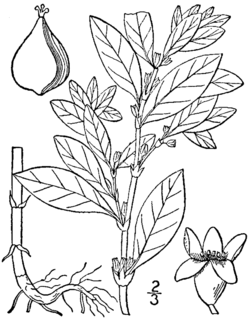
Polygonum erectum is a North American species of annual plant species in the buckwheat family, with upright or ascending stems, called erect knotweed. It was once cultivated for food by Native Americans as part of the group of crops known as the Eastern Agricultural Complex. It is found primarily in the northeastern and north-central parts of the United States, but with scattered populations in other parts of the US and also in Canada.
Polygonum californicum is a species of flowering plant in the buckwheat family known by the common name California knotweed. It is native to the west coast of the United States from Washington, Oregon, and northern and central California in the Coast Ranges and Sierra Nevada foothills as far south as Napa and Tulare Counties. It can be found in many types of open habitats.
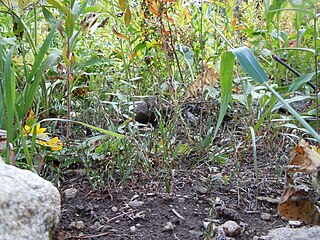
Polygonum douglasii is a species of flowering plant in the knotweed family known by the common name Douglas's knotweed. It is native to much of northern and western North America, where it can be found in many types of habitat, including disturbed areas. It has been found in Canada from British Columbia north to Yukon and east as far as Québec, and in the United States as far south as California, New Mexico, Iowa, and New York.
Polygonum parryi is a species of flowering plant in the knotweed family known by the common names Parry's knotweed and prickly knotweed. It is native to the western United States from Washington to California, where it grows in several types of moist, open habitat in mountainous and coastal areas.

Bistorta bistortoides is a perennial herb in the buckwheat and knotweed family Polygonaceae. The species name remains unresolved.
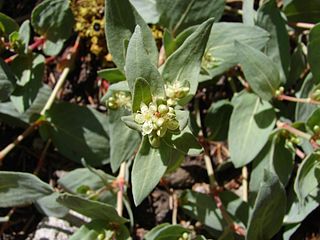
Koenigia davisiae is a flowering plant in the knotweed family that is known by the common names Davis' knotweed or Newberry knotweed.

Polygonum argyrocoleon, common names silver-sheath knotweed and Persian knotweed, is an Asian species of plants in the buckwheat family. It is native to Siberia, western China, Central Asia, and the Middle East. It has also become naturalized in parts of the United States, primarily the Southwest, and northwestern Mexico.
Polygonum austiniae, common name Mrs. Austin's knotweed, is a plant species in the buckwheat family. It is native to western Canada and the western United States, from Alberta and British Columbia south as far as California, Nevada, and Wyoming.
Polygonum cascadense is a species of flowering plant in the buckwheat family known by the common name Cascade knotweed. It has been found only in the State of Oregon in the northwestern United States, in the Cascades and in the Blue Mountains.
Polygonum engelmannii, common name Engelmann's knotweed, is a North American species of plants in the buckwheat family. It is native to western Canada and the western United States, usually at high elevations in the mountains. It has been found in Alberta, British Columbia, Idaho, Montana, Wyoming, Nevada, Utah, and Colorado.
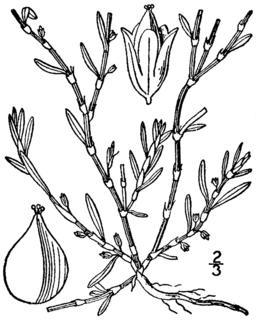
Polygonum glaucum, common names seabeach knotweed and seaside knotweed, is a North American species of plant in the buckwheat family. It grows on the Atlantic Coast of the United States, from Alabama to Massachusetts, including in salt-water inlets such as Chesapeake Bay and the Hudson River.
Polygonum majus is a North American species of flowering plant in the buckwheat family known by the common name wiry knotweed. It grows in the western United States and western Canada, from British Columbia south as far as the Sierra Nevada of northwestern Inyo County in California, east as far as Montana.
Polygonum nuttallii is a North American species of flowering plant in the buckwheat family known by the common name Nuttall's knotweed. It grows in the Pacific Northwest, in British Columbia, Washington, and Oregon.
Polygonum spergulariiforme is a North American species of flowering plants in the buckwheat family known by the common name spurry knotweed or fall knotweed. It grows in western Canada and the western United States.

Polygonum tenue, the slender knotweed or pleat-leaf knotweed, is a North American species of plants in the buckwheat family. it is widespread across south-central Canada (Ontario) and the eastern and central United States from Maine to Georgia, west as far as Minnesota, South Dakota, Nebraska, and Texas.
Polygonum utahense, the Utah knotweed, is an unresolved name for a putative North American species of plants in the buckwheat family. It has been found only in the States of Utah and Arizona in the southwestern United States.

